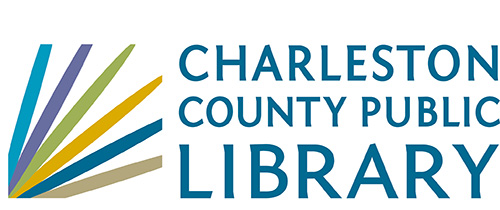Menu
×
Folly Beach Library
9 a.m. - 5:30 p.m.
Phone: (843) 588-2001
Edgar Allan Poe/Sullivan's Island Library
Closed for renovations
Phone: (843) 883-3914
West Ashley Library
9 a.m. – 7 p.m.
Phone: (843) 766-6635
Wando Mount Pleasant Library
9 a.m. – 8 p.m.
Phone: (843) 805-6888
Village Library
9 a.m. - 6 p.m.
Phone: (843) 884-9741
St. Paul's/Hollywood Library
9 a.m. – 8 p.m.
Phone: (843) 889-3300
Otranto Road Library
9 a.m. – 8 p.m.
Phone: (843) 572-4094
Mt. Pleasant Library
9 a.m. – 8 p.m.
Phone: (843) 849-6161
McClellanville Library
9 a.m. - 6 p.m.
Phone: (843) 887-3699
Keith Summey North Charleston Library
9 a.m. – 8 p.m.
Phone: (843) 744-2489
John's Island Library
9 a.m. – 8 p.m.
Phone: (843) 559-1945
Hurd/St. Andrews Library
9 a.m. – 8 p.m.
Phone: (843) 766-2546
Miss Jane's Building (Edisto Library Temporary Location)
9 a.m. - 4 p.m.
Phone: (843) 869-2355
Dorchester Road Library
9 a.m. – 8 p.m.
Phone: (843) 552-6466
John L. Dart Library
9 a.m. – 7 p.m.
Phone: (843) 722-7550
Baxter-Patrick James Island
9 a.m. – 8 p.m.
Phone: (843) 795-6679
Main Library
9 a.m. – 8 p.m.
Phone: (843) 805-6930
Bees Ferry West Ashley Library
9 a.m. – 8 p.m.
Phone: (843) 805-6892
Mobile Library
9 a.m. - 5 p.m.
Phone: (843) 805-6909
Today's Hours
Folly Beach Library
9 a.m. - 5:30 p.m.
Phone: (843) 588-2001
Edgar Allan Poe/Sullivan's Island Library
Closed for renovations
Phone: (843) 883-3914
West Ashley Library
9 a.m. – 7 p.m.
Phone: (843) 766-6635
Wando Mount Pleasant Library
9 a.m. – 8 p.m.
Phone: (843) 805-6888
Village Library
9 a.m. - 6 p.m.
Phone: (843) 884-9741
St. Paul's/Hollywood Library
9 a.m. – 8 p.m.
Phone: (843) 889-3300
Otranto Road Library
9 a.m. – 8 p.m.
Phone: (843) 572-4094
Mt. Pleasant Library
9 a.m. – 8 p.m.
Phone: (843) 849-6161
McClellanville Library
9 a.m. - 6 p.m.
Phone: (843) 887-3699
Keith Summey North Charleston Library
9 a.m. – 8 p.m.
Phone: (843) 744-2489
John's Island Library
9 a.m. – 8 p.m.
Phone: (843) 559-1945
Hurd/St. Andrews Library
9 a.m. – 8 p.m.
Phone: (843) 766-2546
Miss Jane's Building (Edisto Library Temporary Location)
9 a.m. - 4 p.m.
Phone: (843) 869-2355
Dorchester Road Library
9 a.m. – 8 p.m.
Phone: (843) 552-6466
John L. Dart Library
9 a.m. – 7 p.m.
Phone: (843) 722-7550
Baxter-Patrick James Island
9 a.m. – 8 p.m.
Phone: (843) 795-6679
Main Library
9 a.m. – 8 p.m.
Phone: (843) 805-6930
Bees Ferry West Ashley Library
9 a.m. – 8 p.m.
Phone: (843) 805-6892
Mobile Library
9 a.m. - 5 p.m.
Phone: (843) 805-6909
Patron Login
menu
Item request has been placed!
×
Item request cannot be made.
×
 Processing Request
Processing Request
The evolution of charcoal-burning suicide: A systematic scoping review.
Item request has been placed!
×
Item request cannot be made.
×
 Processing Request
Processing Request
- Author(s): Yeung, Cheuk Yui; Men, Vera Yu; Yip, Paul Siu Fai
- Source:
Australian & New Zealand Journal of Psychiatry; Mar2023, Vol. 57 Issue 3, p344-361, 18p- Subject Terms:
- Source:
- Additional Information
- Subject Terms:
- Abstract: Introduction: Suicide by charcoal burning has accounted for more than 100,000 deaths. It has become an increasingly common suicide method in Hong Kong since first reported in 1998, and it has spread into South Korea, Taiwan, Japan and other countries. This systematic scoping review aimed to explore current evidence on trends, risk factors, impact of media and prevention strategies for this suicide method, and to identify research gaps. Methods: A search for articles published from January 1998 to June 2021 was conducted through electronic databases (MEDLINE, EMBASE, SCOPUS and PsycINFO) with the keywords (suicide*) AND (charcoal). Articles describing prevalence, trends, characteristics, risk factors and prevention strategies of charcoal burning suicide deaths were included. Non-peer-reviewed articles, non-English articles, commentaries/editorials/letters, poster abstracts, reviews, meta-analyses and studies that documented only charcoal burning suicide attempters/survivors were excluded. Results: Eighty-eight studies were identified, most from East Asia. Charcoal burning suicide rates in Hong Kong, Taiwan and Japan has passed the peak, while continuing to increase in South Korea. Risk factors are changing and not static. Media appears to play an important role in triggering and spreading information. Restricting access to charcoal, and raising public awareness have been effective in the short term in preventing charcoal burning suicide, but there is little information on their long-term effectiveness or sustainability. Discussion: More research is required to update the development and dynamic changes of charcoal burning suicide and the contributing factors. The evidence from this review may assist in detecting and intervening early for future novel suicide methods. [ABSTRACT FROM AUTHOR]
- Abstract: Copyright of Australian & New Zealand Journal of Psychiatry is the property of Sage Publications Inc. and its content may not be copied or emailed to multiple sites or posted to a listserv without the copyright holder's express written permission. However, users may print, download, or email articles for individual use. This abstract may be abridged. No warranty is given about the accuracy of the copy. Users should refer to the original published version of the material for the full abstract. (Copyright applies to all Abstracts.)
Contact CCPL
Copyright 2022 Charleston County Public Library Powered By EBSCO Stacks 3.3.0 [350.3] | Staff Login


No Comments.